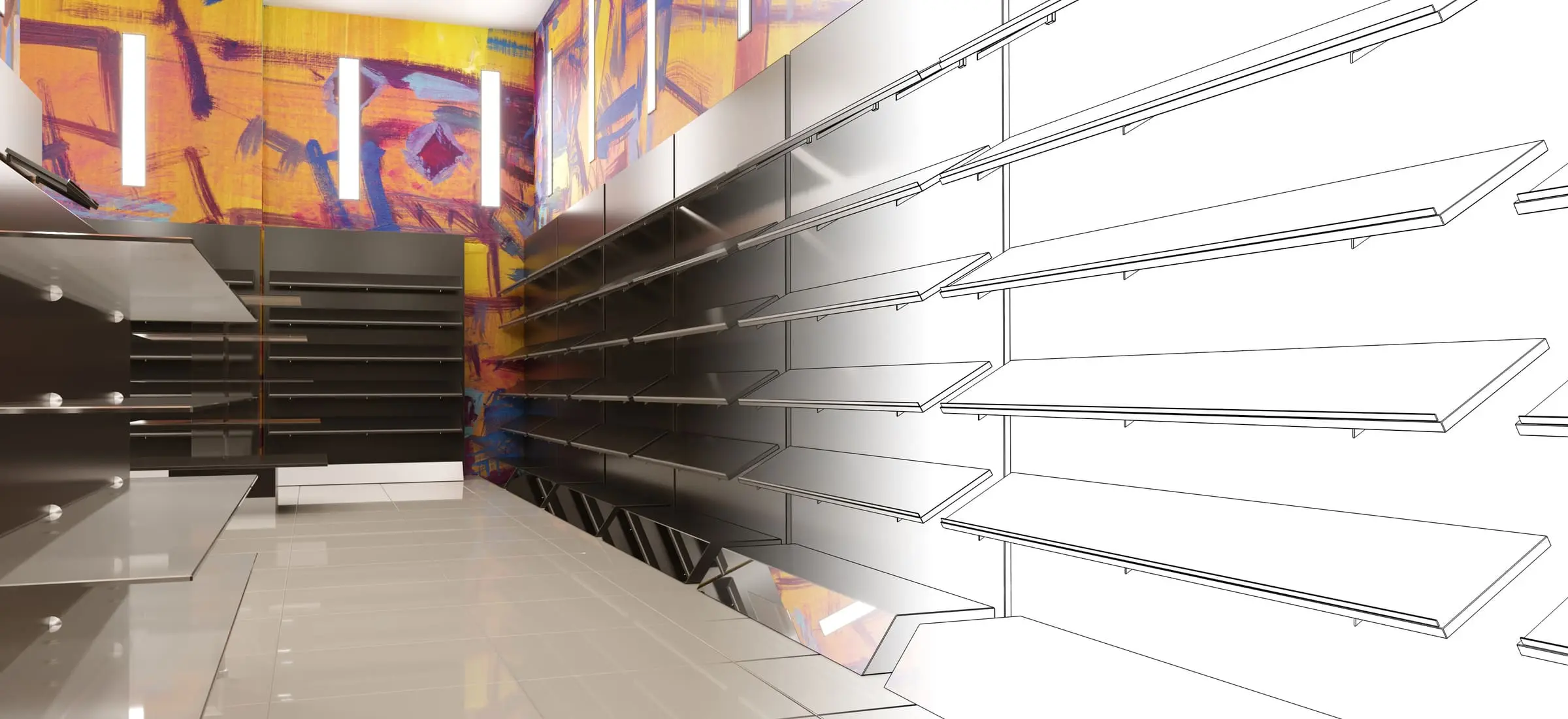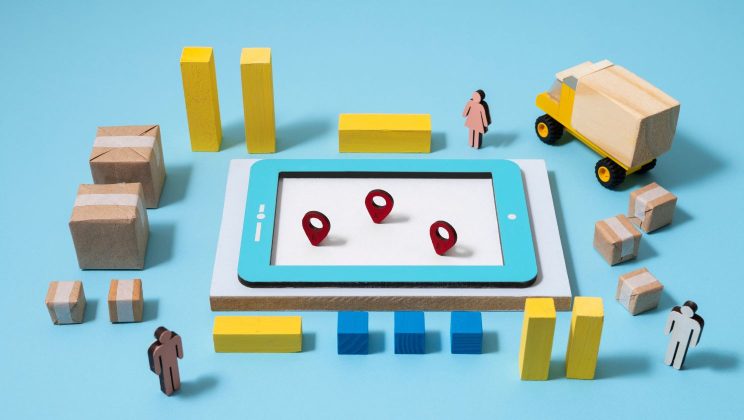Retailers on the bleeding edge have one common characteristic: awareness. Their ability to understand their inventories and supply chain disruptions in real time, optimize store layouts and hyper-personalize customer experiences could be likened to be supernatural. Companies virtually mirroring their operations with digital twins are leaving their competitors behind, and it can seem daunting for many businesses, especially mid-size retailers and retail SaaS providers, to keep up.
The good news is that digital twins aren’t unattainable — they’re accessible. Over the course of my work leading software development projects for MobiDev and its clients, I’ve seen how retailers of all sizes, small to large, startups to established businesses, can feasibly develop and scale digital twin systems. Whether you’re starting from nothing or have a legacy system that’s falling behind, this is the guide you need to master creating a digital twin in retail.
Digital Twins: The Basics
Research and Markets reports that 47% of leaders in IT haven’t even heard of digital twins. If you’re worried about falling too far behind, this knowledge gap could be an opportunity. This section is great if you’re just learning about digital twin technology. If you’re more tech savvy or have heard about this before, head further down the guide to get started learning about how you can start building a scalable digital twin system right now.
What is a Digital Twin?
Digital twins are virtual models powered by data from sensors and software of a system or process in the real world. In the 1960s, NASA’s Apollo 13 suffered an oxygen tank failure. However, thanks to several simulators, they were able to quickly identify the problem and potential solutions. Today, digital twin simulations have evolved to be much more powerful and operate entirely virtually.
Digital twins are used in a variety of industries, most notably manufacturing. Just like how they’re used in factories, retail implementations digitally mirror operations in a simulated environment. For example, a digital twin of your supply chain simulates the entire supply chain network your business interacts with by using real-time data. With that data, you can use analytics and AI to predict what can happen to the supply chain in different scenarios. This can help you quickly identify and manage disruptions. Since it’s all done digitally, you can also simulate potential scenarios like disasters as well.
With digital twins, data is nonnegotiable, and you’ll need lots of it. IoT sensors in store backrooms and warehouses are excellent for getting the data you need. Another rich source of information that you have in your stores right now is your POS network. Self-checkout, cash registers, and ecommerce platforms generate a wealth of data. Integrating it into an omnichannel system is the next step.
What Are the Four Types of Digital Twins?
There are four common types of digital twins:
- Component Twins: mirroring individual products
- Asset Twins: representing complex assemblies or machines
- System Twins: dealing with interconnected systems like supply chains
- Process Twins: mirroring entire operational processes
As an example, building a twin of a brick-and-mortar sales floor would be an asset twin. Shelf availability and real-time inventory tracking can be mirrored digitally using the right sensors and data. In another example, retail businesses may find it beneficial to use digital twins to model customer behavior. This is a complex undertaking that would fall under the process twins category.
1. Component Twins
Traditionally, component twins are often thought of in manufacturing contexts. They digitally mirror pieces of a physical asset, product, or machine, and source their data from IoT sensors measuring the status of that asset in real-time. By monitoring these vitals, businesses can use the data to monitor the status of assets and inform predictive maintenance algorithms.
In retail, component twins might take the form of smart shelf sensors in a physical store. By monitoring the stock levels of products on the shelf, businesses can track more than just sales floor quantity. They can track when items are picked, and even the status of the smart shelf itself to ensure that it continues functioning as expected. This is also an excellent asset when combatting causes of shrinkage.
2. Asset Twins
Smart shelves are just a piece, a component, of a larger “machine” of retail. Asset twins replicate entire machines, buildings, and other large environments. Asset twins measure how components, like many different shelves, work together to function efficiently. Although this might take the form of modeling all the smart shelves in your store, it could also be a model of your HVAC system. By monitoring the performance and health of your HVAC system through a digital asset twin, it becomes much easier to monitor its performance and perform predictive maintenance on the system, mitigating operating costs for the store.
3. System Twins
This is a step up from the small world of components and assets. System twins model entire processes beyond just a store. Supply chain networks and regional store vitals are excellent systems to model with a digital twin. By studying and monitoring the data from supply chain networks and data from multiple stores, you can optimize delivery schedules, identify obstacles, and keep all operations running at the pace your customers have come to expect.
4. Process Twins
If systems are about networks and clusters of work happening in your retail business, process twins are about studying how that work gets done. A process twin looks at how things happen in your store. When items are delivered, how are they unpacked, sorted, and stocked? The real insights come from identifying specific problems. What are the leading causes of backroom location inaccuracies? Modeling processes like retail inventory management make it possible to simulate and strategically determine the most efficient ways to improve those processes. This can make it much easier for stores to meet exceptional demands for services like buy online pick up in store (BOPIS).
Future of Digital Twins in Retail
The future of digital twin technology in retail is closely tied to the Internet of Things (IoT) market, which is where the most critical component of digital twins comes from: data. When these sensors are cheap and easy to install, gathering the data that you need to create efficient and intelligent digital twin systems becomes much more accessible. Ericsson Mobility Visualizer (via Statista) predicts that nearly 40 billion IoT devices will be installed by 2029.
As these components and sensors get cheaper, it will be easier for businesses to incorporate them into their operations. That’s why it’s important to get ahead of the curve and start laying the groundwork for a scalable digital twin system for retail right now.
Digital Twins: A Look Under the Hood
To better understand how a scalable digital twins implementation would work for your business, we need to take a closer look at how they actually work.
What Software is Used for Digital Twins?
Many businesses find out of the box solutions or “digital twins as a service” options attractive. Some available options are Siemens, PTC, Microsoft Azure Digital Twins, and AWS IoT TwinMaker to name a few.
Unfortunately, this isn’t always as easy as it sounds. This is especially true for retailers with established legacy systems with no straightforward way to migrate or integrate with an out-of-the-box product. Custom software development can be superior in many cases when you need something that fits your business needs. It also can give you greater technological independence and security.
What Are Technology Options for Building a Digital Twin?
- IoT + Edge + Cloud Infrastructure
Use sensors (RFID, smart shelves, cameras), edge devices for real-time processing, and cloud platforms (AWS, Azure, Google Cloud) to collect and manage store or supply chain data. - AI & Computer Vision
Implement object detection and people tracking to analyze customer behavior, monitor queues, ensure shelf compliance, and optimize in-store experiences. - Simulation & Modeling Platforms
Use tools like AnyLogic or Siemens Tecnomatix for operations simulation, and 3D/AR/VR platforms (Unity, Unreal) for store layout planning or staff training. - Digital Twin Platforms
Leverage ready-made platforms such as Azure Digital Twins, AWS IoT TwinMaker, Siemens Mindsphere, or PTC ThingWorx for scalable, integrated digital twin development. - Custom-Built Solutions
Build tailored systems using your own tech stack (e.g., Python, Node.js, Kafka, React, TensorFlow) for full control over functionality, integration, and user experience.
How Are Digital Twins Used in Retail?
As we explore a few of these use cases, think about your own retail business. How would you use digital twins for the specific situations your brand faces?
1. Inventory Management and Demand Forecasting
Salesfloor quantity measurement and backroom location accuracy are serious business for retailers looking to keep inventories up to date, measure the flow of product in and out of the store, and to identify shrinkage. Intelligent POS systems and regular auditing can help with that, but it’s rare that stores can accomplish this in real-time with those methods. This is especially true with regards to shrinkage. Items that get misplaced, stolen, defected, salvaged, donated, and recalled can complicate things in their own unique ways. Digital twins powered by dedicated IoT sensors to augment your existing data sources can give you a better picture of what’s going on.
In 2024, Walmart published a study on the effectiveness of digital twins in retail environments. To demonstrate the accuracy of the virtual model of the store, they built a mobile application for tested customers to perform product wayfinding.
Walmart’s study utilized smartphone cameras or HMDs to assess the current state of a shelf. With image recognition models, a virtual model of the shelf can be generated and updated based on the products that it sees. This is an interesting case study, but there’s room to go further. With mounted cameras watching shelves, or smart shelving with RFID, pressure, or other unique sensor solutions, products can be monitored more persistently and more accurately over time.
Although seeing where a product is in 3D space in your digital twin is fun, having accurate salesfloor quantities is even more important for inventory management. Importantly, the same sensors used to keep track of the movement of these products can be used to cultivate data that’s incredibly valuable for AI demand forecasting algorithms. This can allow stores to better optimize for times of high and low demand.
2. Store Layout Optimization and Media Planning
By collecting data from sensors and cameras on various aspects of a store, digital twins in retail can assess optimization algorithms. For example, would it be more efficient to have merchandise displays arranged in one way or another? Where are the best places to put signage? What situation would better arrange the customer’s journey through the store? These are all questions that store layout optimization and media planning with digital twins can answer through data and simulation.
3. Customer Experience Personalization and Omnichannel Integration
Thanks to digital twins, retailers are improving customer experiences by creating 3D product models and virtual try-on experiences. While these experiences are far more contained and separate from true digital twin experiences, it’s still important to consider these experiences as being closely related to your omnichannel offerings. This is one component that can help make customer experiences more consistent across all channels.
How To Implement Digital Twins?
Incorporating a digital twin system into your retail business doesn’t have to be painful. When broken down into steps, the implementation process looks like this:
- Assess existing infrastructure and data readiness
- Choose the right type of digital twin
- Integrate IoT sensors and data sources
- Develop AI models and visualization tools
- Start small with prototypes, then scale iteratively
- Address legacy system integration challenges
Implementing digital twins starts with understanding what kind of data and information you currently have available to your business and what it would take to fill in the gaps. Once you have a good understanding of the foundation of your data, you need a place to keep track of it and store it: databases. You’ll then need a way to generate reports to monitor, discuss, and make strategic decisions on data. Finally, you’ll be able to create interactive system modeling, the actual “digital twin” component of the process.
Keeping your implementation scalable is extremely important. It’s okay if your system is simple to start out with. If you leave room to grow you can ensure that it will be cost effective over time while being capable of optimizing your operations as they are right now. This foresight gives your business greater flexibility as it shifts in size over time.
This is also why having a custom-built solution is typically the best option for most retail businesses. Out of the box solutions may not have the scalability options that you need that can fit with your existing systems. Although implementing custom-built systems can be less clear than using a digital twin as a service solution, the work will eventually pay off by being much more tailored to the needs of your brand.
Is Developing a Digital Twin Expensive?
The cost of developing and maintaining a digital twins system is highly dependent on infrastructure, software, data, and expertise. The more scalable your solution is, and the more phased the implementation, the cheaper upfront costs will be. As operations scale up, return on investment is seen through operational efficiency and improved customer engagement.
What Are the Disadvantages and Risks of Digital Twins?
As with any innovative and far-reaching project, digital twin development can have a high initial investment. Although expensive in the short term, digital twins can pay off in the long term with the strategic and scalable solutions that they provide which improve efficiency and customer satisfaction.
Whenever you deal with a project with a lot of data involved, privacy is a paramount concern. Not only does it have profound implications for your compliance with national privacy regulations, but data privacy can also have a serious impact on your customer loyalty if neglected. This is a risk to consider alongside cybersecurity. User data could be at risk if any part of your system is compromised. Strengthen your cybersecurity and offer your customers regulation-compliant privacy policies and opt out options to preserve valuable trust.
Digital twins offer powerful simulation capabilities. However, simulations can only take you so far. Over-relying on simulated data can have unexpected consequences. The more grounded in real-world data you can get, the better.
Although these systems certainly have their risks, when properly managed, digital twin benefits for retailers far outweigh their disadvantages in the long term.
Case Study: Interactive ERP System for In-Store Retail Marketing Operations
Here at MobiDev, we internally developed an interactive ERP system designed to manage marketing activities across brick-and-mortar retail locations. This solution functions as a digital twin of physical retail venues, enabling centralized planning, monitoring, and optimization of in-store campaigns, staffing, and customer engagement zones. Here’s some of its features:
- Digital twin of complex marketing materials distribution system gives ability to experiment, compare and plan the expected outcomes of marketing campaigns with various conditions
- Dynamic content creation system completes the full marketing campaign cycle from its digital planning to tracking of marketing materials shipment and installation, supported with unique digital manuals.
- Multiple user roles: permissions can be allocated to store-level marketers, and regional managers. A corporate admin dashboard can be configured to be available for distinct roles.
- 3D content: created in collaboration with a partner specializing in spatial visualization. You might consider Matterport or similar services for another project.
- 3D floor plans and virtual store walkthroughs: this allows for simulation of in-store layouts and promotional setups
- Power BI dashboard integration: this allows for real-time campaign performance metrics and store traffic insights to be readily available to business leaders
- Web frontend: based on React, this feature allows for interactive planning and execution
React and Ruby make up the foundation of the system’s stack, the underlying architecture is tech agnostic. That means it can be adapted to any retail-specific needs or enterprise environments. This is important when considering that retail businesses often have unique needs, existing software ecosystems, and business processes.
This project illustrates how a digital twin system can unify physical and digital retail operations. With actionable insights, interactive planning tools, and a scalable foundation for omnichannel growth, a business can achieve greater efficiency and meet rising customer demands for service.
Build a Digital Twin for Your Business with MobiDev
Over my time working with our tech consulting council, I’ve seen how an experienced and high-quality tech team can make a real difference for a business. When you work with MobiDev for digital twin system development, your retail business won’t just develop a cutting edge, virtualized simulation of your store processes — you’ll create a scalable solution that ensures your customers can rely on you. You’ll also reap the benefits of our AI consulting services, allowing you to optimize the future of your business’s data with intelligent forecasting and analysis.
When you trust MobiDev’s retail software development services, you’ll maintain and develop valuable trust with your customers through data privacy compliance and reliable cybersecurity solutions. When you’re ready to start keeping pace with the competition and step into the future of retail, contact us to talk more about how you can develop a digital twin retail solution.




